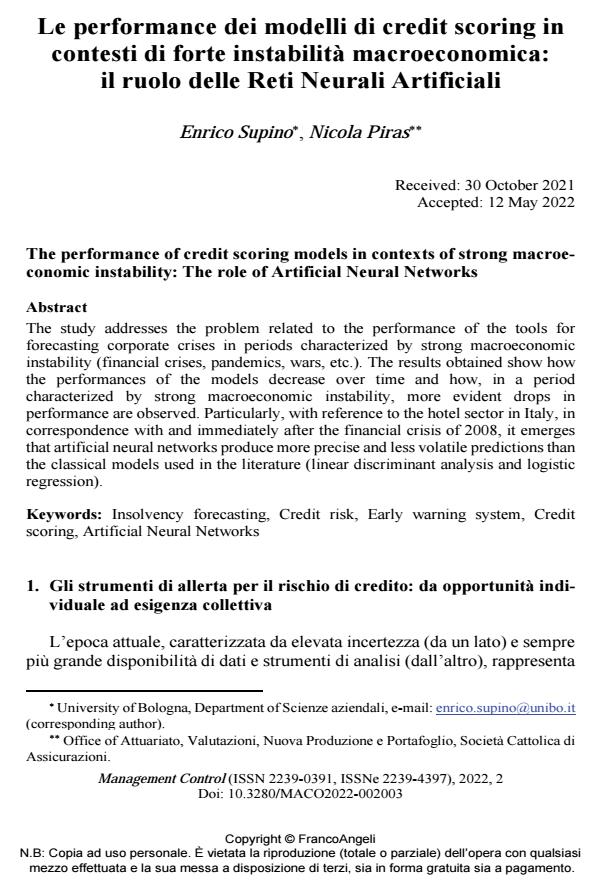The performance of credit scoring models in contexts of strong macroeconomic instability: The role of Artificial Neural Networks
Journal title MANAGEMENT CONTROL
Author/s Enrico Supino, Nicola Piras
Publishing Year 2022 Issue 2022/2
Language Italian Pages 21 P. 41-61 File size 369 KB
DOI 10.3280/MACO2022-002003
DOI is like a bar code for intellectual property: to have more infomation
click here
Below, you can see the article first page
If you want to buy this article in PDF format, you can do it, following the instructions to buy download credits

FrancoAngeli is member of Publishers International Linking Association, Inc (PILA), a not-for-profit association which run the CrossRef service enabling links to and from online scholarly content.
The study addresses the problem related to the performance of the tools for forecasting corporate crises in periods characterized by strong macroeconomic instability (financial crises, pandemics, wars, etc.). The results obtained show how the performances of the models decrease over time and how, in a period characterized by strong macroeconomic instability, more evident drops in performance are observed. Particularly, with reference to the hotel sector in Italy, in correspondence with and immediately after the financial crisis of 2008, it emerges that artificial neural networks produce more precise and less volatile predictions than the classical models used in the literature (linear discriminant analysis and logistic regression).
Keywords: Insolvency forecasting, Credit risk, Early warning system, Credit scoring, Artificial Neural Networks
- Intelligenza artificiale e accounting: le possibili relazioni Diego Valentinetti, Michele A. Reaa, in MANAGEMENT CONTROL 2/2023 pp.93
DOI: 10.3280/MACO2023-002005 - The relevance of cash flow information in predicting corporate bankruptcy in Italian private companies Simone Poli, Marco Gatti, in MANAGEMENT CONTROL 1/2024 pp.179
DOI: 10.3280/MACO2024-001009
Enrico Supino, Nicola Piras, Le performance dei modelli di credit scoring in contesti di forte instabilità macroeconomica: il ruolo delle Reti Neurali Artificiali in "MANAGEMENT CONTROL" 2/2022, pp 41-61, DOI: 10.3280/MACO2022-002003